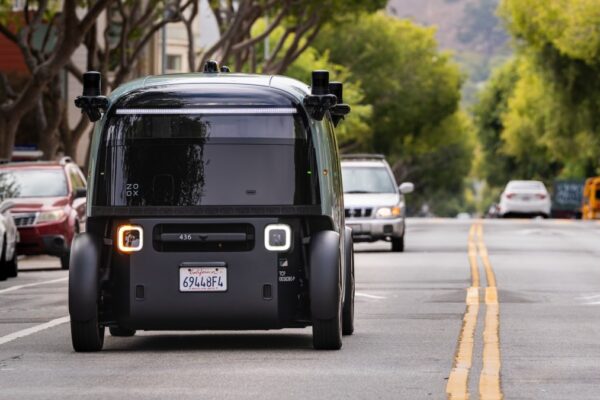How To Balance Automation And The Human Touch In Content Strategy
Hands typing on laptop
getty The point of technology is to help humans save time and accomplish more with the moments they have. Inventions like the microwave make it possible to cook meals within minutes. Smart thermostats give residents remote control over their homes’ temps, plus how different rooms feel based on when they’re occupied. The list of conveniences continues to grow as tech’s capabilities advance.
Using AI to automate content strategy is undoubtedly rising toward the top of the list. Marketers realize it’s getting more difficult to captivate audiences and keep them interested long enough to influence their behaviors. But like most technologies, AI requires the human touch to be effective. While automating everything about your content strategy is tempting, it’s usually not the ideal answer. Here’s how to balance the two as you drum up and execute your content.
Generate Topics And Outlines With AI It’s not easy to keep churning out posts. Undoubtedly, creating piece after piece takes time. You’ve got your fair share of grunt work ahead of you. And continuing to come up with fresh, engaging topics is challenging, to say the least. So is fleshing them out in an outline.
Sometimes you’re not sure what to include and expand upon. Other times, you feel as though your creative well has run dry. Using AI to produce all your content to boost quantity is less preferable to prioritizing quality. However, the technology can help spark ideas.
Tools like OpenAI’s ChatGPT are good at generating topics and outlines. If you’re specifically looking for new subject matter for blogs, you can also use a tool like HubSpot’s Blog Ideas Generator. Of course, you’ll still want to research what your main competition is writing about. If they’ve covered the same topic, find a different angle you can take or expand upon. Keep writing most of the content, but don’t be afraid to rely on AI to brainstorm for you.
Read More: How Every Industry Can Harness The Power Of AI To Be Innovative Fine-Tune Your Audience Segmentation With AI-Driven Insights Over one-third of B2C marketers consistently rely on data when crafting their content strategies. They’re not just creating pieces out of thin air, guessing what might resonate with their audience. These creators also aren’t using vanity metrics to justify a blog topic they’re excited about.
But data alone doesn’t always point you in the right direction, either. You need a balance between human and data-driven insights to realize your destination. That’s why combining information from tools like Google Analytics and Semrush can give you a leg up.
How much organic versus paid traffic are your blog posts generating? There could be specific posts with more of an organic push and a lower bounce rate. This data could point toward a need for pillar pages complete with a series of short-form and long-form content. It boils down to combining the data within your team’s experience and the information revealed by the tools. And, naturally, your team’s ability to analyze it all with a critical mindset.
Once you do this, you’ll find you’ll segment your audiences with improved accuracy. Your content strategy will move from generic outreach to part of shaping audiences’ personalized experiences. Your content will come across as having the human touch with individual customer needs in mind.
Use Tools To Optimize Content Calendars Creating a fabulous piece doesn’t do your strategy much justice if you don’t optimize your publishing schedule. Frequency, platform and audience targeting all play a role. Failing to plan out your content calendar well in advance can also be seen as a plan to fail. Simultaneously, you want to build some flexibility in your schedule for last-minute and unpredictable elements.
An AI tool like Buffer helps your social media team plan when to post specific content. A social media calendar may be only one part of your content strategy. But it can represent a big chunk of what you release, including short-form videos. You may also want to coordinate your social media team’s calendar with blogs and landing pages.
It doesn’t make sense to try to sync all of this on the fly or solely rely on human memory. The human mind may also fall short of discerning ideal pacing. Put too much content out there at once and you risk alienating or overwhelming your audience. Too little without sufficient reach and you may not get great results. AI content calendar tools can fill in those blanks, but maintaining human oversight will also prevent potential timing errors technology can’t see.
A Balanced Content Strategy Besides the uses above, other opportunities exist to balance automation and the human touch in your content strategy. Keyword research, proofreading and task management are others. A 2022 HubSpot survey revealed most content marketers spend between $40,000 and $80,000 each quarter. Although this range may be a drop in the bucket for a company’s overall budget, achieving ROI remains a top goal.
MORE FROMFORBES ADVISORBest High-Yield Savings Accounts Of 2024ByKevin PayneContributorBest 5% Interest Savings Accounts of 2024ByCassidy HortonContributor Automation presents a tempting array of shortcuts—a way to scale up and get more bang for your buck. Yet, technology can only go so far and could produce outcomes that stray far from a content team’s original intent. Intersecting human and AI-driven insights helps content teams develop well-rounded strategies to capture, engage, maintain and grow their audiences.












 Bitcoin
Bitcoin  Ethereum
Ethereum  Tether
Tether  XRP
XRP  USDC
USDC  Wrapped SOL
Wrapped SOL  TRON
TRON  Lido Staked Ether
Lido Staked Ether  Dogecoin
Dogecoin